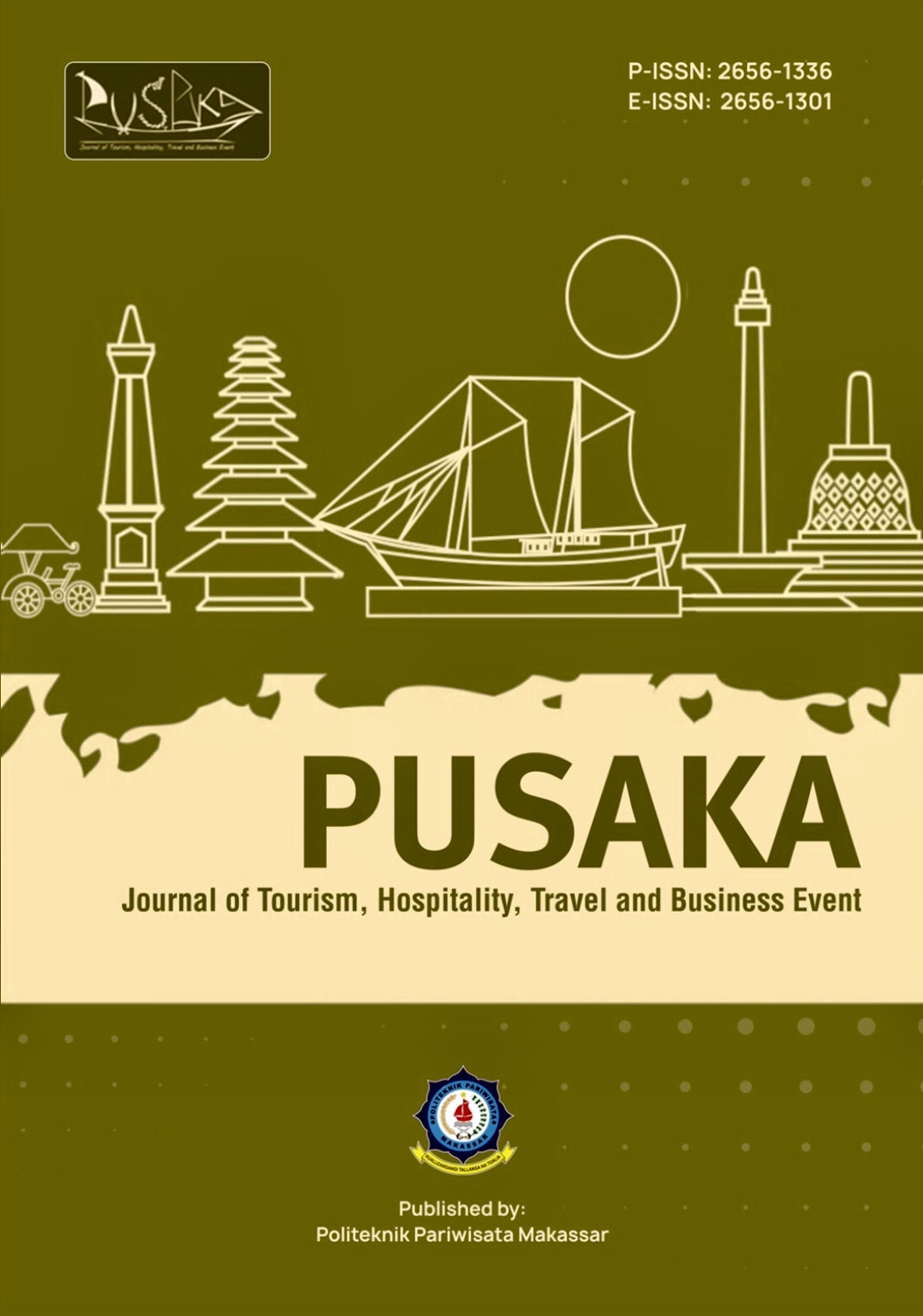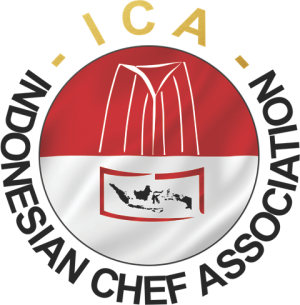The Application of the Use of Indonesian Language in Promoting Tourist Destinations to ArchipelagoTourists in North Toraja Regency
DOI:
https://doi.org/10.33649/pusaka.v5i1.121Keywords:
Implementation Language Indonesia, Tourism Destination PromotionAbstract
Indonesian language should be encouraged through tourism promotion, especially in the tourism sector, to describe the form of tourism promotion and implementation. Bahasa Indonesia, as a domestic tourism promotion, also describes the role of Bahasa Indonesia as tourism communication to develop and internationalise Bahasa Indonesia in the Department of Tourism and Cultural of North Toraja Regency. This research aims to describe the tourism promotion form in the Department of Tourism and Cultural of North Toraja Regency. Data collection techniques with in-depth interviews through the Snowball Sampling technique for the stakeholder included the private management of tourism attractions, tour guide, and visitors at tourist destination areas. The conclusion of this research is the promotional language to use in the Department of Tourism and Cultural of North Toraja Regency through two options of language: Bahasa Indonesia and English language, but also uses a traditional or local vocabulary which is often used for tourist attraction and describe the local language.
References
Alwi, Hasan. 1998. Tata Bahasa Baku BahasaIndonesia. Edisi Ketiga. Jakarta: BalaiPustaka.
Chaer, Abdul.2011. Ragam Bahasa Baku. Jakarta : Rineka Cipta.
Chaer, Abdul. 2007. Linguistik Umum. Jakarta: Rineka Cipta.
Dann, G. 1996. The Language of Tourism: A Sociolinguistic Perspective. UK:CAB.
Djajasudarma, Fatimah. 1975. Metode Linguistik Ancangan Metode Penelitian dan Kajian. Bandung:Refika Offset.
Djajasudarma, Fatimah. 2007. Semantik I Makna Leksikal dan Gramatikal. Bandung:RefikaAditama.
Halim, Amran (ed.). (1984). Politik Bahasa Nasional 2. Jakarta: PN Balai Pustaka.
Hardini, Tri Indri.Peran Bahasa Indonesia, Daerah,dan Asing dalam Strategi Pemasaran Kue Artis di Kota Bandung. https://www.gotravelly.com/blog/tempat- wisatadi-toraja/ (diakses pada 28 Februari2022).
Kasno Pamungkas. 2016. Peran Linguistik dalam Promosi Pariwisata https://www.researchgate.net/publication/301 585196_Peran_Linguistik_dalam_Promosi_P ariwisata (diakses pada 28 Februari 2022).
Keraf, Gorys.1989. Komposisi Sebuah Pengantar Kemahiran Bahasa. Flores:Nusa Indah.
Moleong, Lexy, J, 2000. Metodologi Penelitian Kualitatif, Bandung: PT Remaja Rosdakarya.
Mujianto, Y. 2006. Panduan Penulisan Karya Ilmiah. Semarang: UNNES.
Muslich, Masnur. dan I Gusti Ngurah Oka. 2012 Perencanaan dalam Bahasa pada era Globalisasi. Jakarta: PT Bumi Aksara.
PATA, 2004, PATA Task Force Central Java in cooperation with Dinas Pariwisata provinsi Jawa Tengah and Departemen Kebudayaan dan Pariwisata RI.
Rahmadi, Duwi. 2017. Pedoman Umum Ejaan Bahasa Indonesia dan Kesalahan Berbahasa. Solo: Genta Smart Publisher.
Ramlan. 1987. Morfologi Suatu Tinjauan Deskriftif. Yogyakarta: CV Karyono.
Setiorini, Retno Asihanti. 2010. Analisis Penggunaan Tata Bahasa Indonesia dalam Penulisan Karya Tulis Ilmiah: Studi Kasus Artikel Ilmiah.https://www.perpusnas.go.id/magazin e-detail.php?lang=en&id=8134 (diakses pada28 Februari 2022).
Sugiyono. 2013. Metode Penelitian Pendidikan Pendekatan Kuantitatif, Kualitatif dan R & D.Cetakan Ke 18. Bandung: Alfa Beta.
Yastini, Yulianti Nur, dkk. 2018. Kemampuan Penggunaan Bahasa Baku Mahasiswa Program Studi Bahasa Indonesia IKIP Siliwangi di Media Sosial Instagram. Parole Jurnal Pendidikan Bahasa dan Sastra Indonesia.(diakses pada 28 Februari 2022).
Downloads
Published
How to Cite
Issue
Section
License

This work is licensed under a Creative Commons Attribution-ShareAlike 4.0 International License.






















